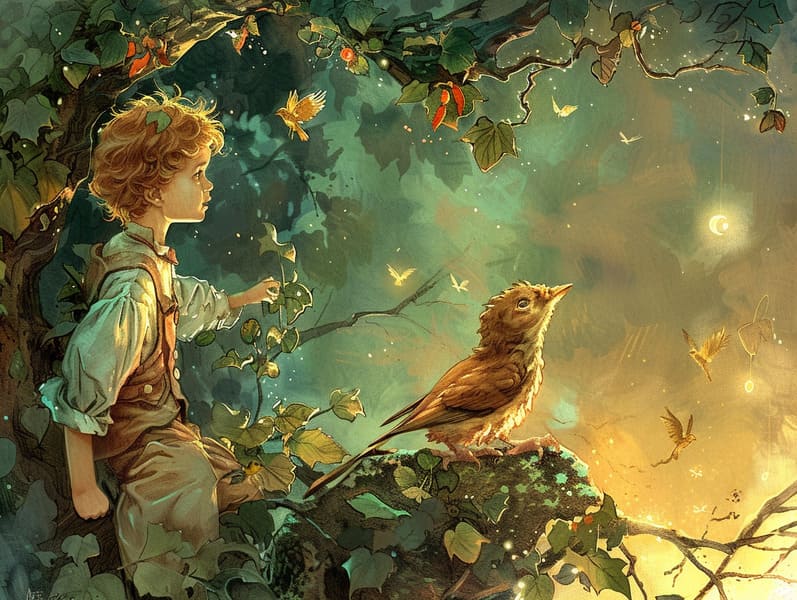A Brief History of Short Fairy Tales with the Unceasing Allure.
A Brief History of Short Fairy Tales with the Unceasing Allure.
Blog Article

Best fairy tales have deep roots. These narratives have been whispered from one generation to the next long before they were ever put on paper. They sprang from a variety of societies, including Western traditions. They were initially narrated among older generations, often carrying themes and messages relevant to the societal norms and beliefs of the time.
The Brothers Grimm, Jacob and Wilhelm Grimm, were among the first to assemble many of these beloved narratives. Their published works, "Grimm's Fairy Tales," included stories like "The True Bride," "Little Brother and Little Sister," and "The True Story of Snow White," which have since become cornerstones in the world of traditional fairy tales. Similarly, Hans Andersen's whimsical fairy tales, such as "The Little Mermaid," and "The Ugly Duckling," have floated into hearts worldwide, establishing their place in the pantheon of classic fairy tales.
Despite their ancient origins, traditional fairy tales remain as important as ever, especially as children's bedtime stories. These delightful tales are now available in numerous formats, including artistically illustrated books, delightful animations, and web-based fairy tales.
Their enduring popularity can be connected to several magical reasons:
Important Morals: Traditional fairy tales often offer important moral lessons. Stories like "The Shepherd Boy and the Wolf" teach the benefit of truthfulness, while "The Race of the Tortoise and the Hare" stress the merits of resolve and modesty. These narratives offer children clear distinctions between ethical and unethical, building their moral compass in a tender yet lasting way.
Empathy and Awareness: Fairy tales frequently present figures facing problems and hurdles, provoking children to comprehend with their struggles and cheer for their triumphs. For instance, "The Story of Beauty and the Beast" emphasizes the benefit of valuing inner qualities to appreciate the real person of a individual, fostering sympathy and comprehension.
Cultural Understanding: Many timeless fairy tales are imbued with the cultural contexts from which they blossomed. Reading these stories can provide enlightening views into different ways of life, enhancing a sense of cultural understanding and awareness.
Fantasy and Imagination: The fanciful elements in old fairy tales—mythical creatures—revitalize children’s creativity. These stories take readers to enchanted realms, firing up fantasy-filled thoughts and a sense of excitement that persists a lifetime.
Traditional fairy tales are not only entrancing but also informative. They work as entrancing tools in advancing various thinking and feeling skills in little ones. When traditional fairy tales are recited, they promote verbal skills by presenting new lexicon and intricate sentence structures. This practice also nurtures hearing perception and concentration, as little ones follow the story, eager to see what happens next.
Furthermore, reflecting on the themes and characters of classic fairy tales can enhance intellectual skills and reasoning skills. Young ones are instructed to identify patterns, foresee events, and catch on to cause and effect. These analyses also promote young ones reveal their thoughts and feelings, enhancing their emotional intelligence.
In today’s cyber age, the existence of digital storybooks has made these fairy tales more obtainable than ever. Internet sites and web apps make available huge assortments of ancient fairy tales that can be enjoyed or listened on anytime, anywhere. Fairy tales read out loud are particularly widespread, making available an interactive method for young ones to take part in these enchanting tales. Sound books and voiced videos carry characters and settings to life, often paired with charming sound effects and songs that augment the tale experience.
The lasting appeal of ancient fairy tales lies in their ability to shift to current website eras while sustaining their central values. Contemporary reinterpretations of these tales often present more diverse characters and modern settings, making them accessible to today’s audience. However, the central morals of guts, humanity, and even-handedness remain unchanged, continuing to impact young readers of all ages.
Timeless fairy tales also offer a sense of security and closeness. They introduce a organized narrative with a clear beginning, middle, and end, often finishing with the culmination of conflicts and the triumph of righteousness over wickedness. This certainty can be placating for children, offering a sense of sturdiness in an constantly changing world.
Timeless fairy tales continue to captivate and inform new generations, maintaining their grace and value in modern society. As bedtime stories for kids, they showcase a perfect blend of magic and knowledge, developing moral values, empathy, and creativity. The availability of digital storybooks and the popularity of fairy tales read out loud assure that these timeless narratives remain obtainable to new generations.
By perpetuating and broadcasting these fairy tales, we continue to acknowledge the rich tapestry of legends and cultural heritage. Whether you are exploring a gorgeously illustrated book, discovering a virtual collection, or listening via an sound book, the attraction of classic fairy tales is always within reach. These narratives emphasize of the unwavering essence of storytelling and its ability to bind us across centuries and lands.
No matter if you are reading a gorgeously illustrated book, exploring a web collection, or listening on an sound book, the mystique of children's fairy tales is always within reach.
These fairy tales point out of the continued force of tales and its ability to hold us together across eras and regions, weaving a spell that delights and instructs alike.